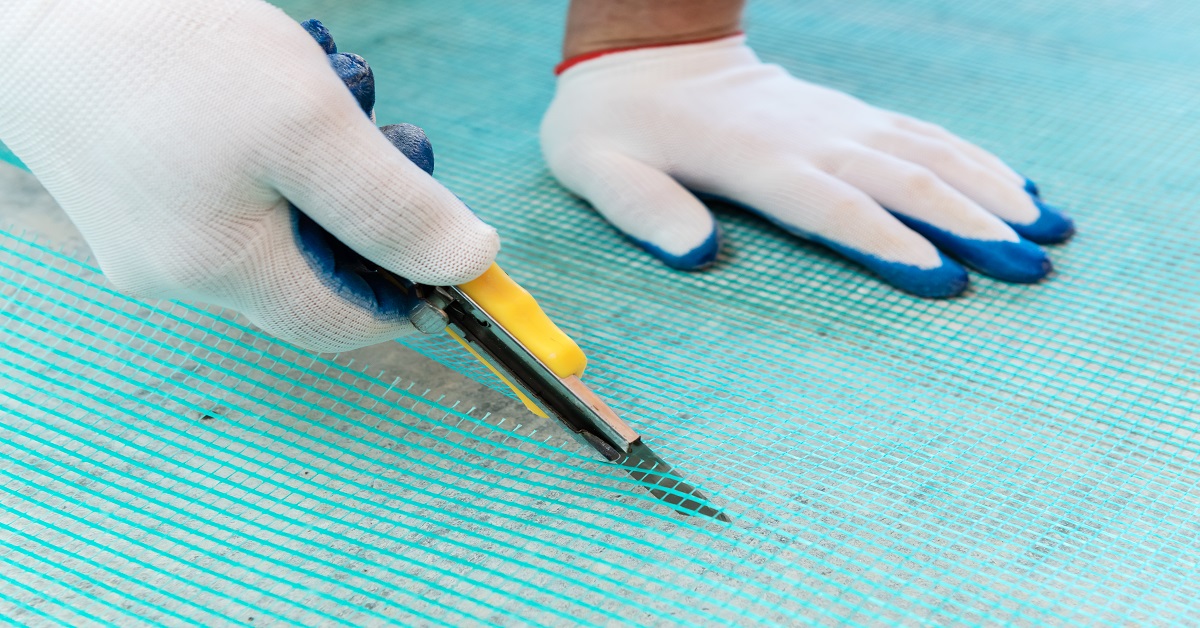Fiberglass, also known as glass reinforced plastic or glass fiber reinforced plastics is used for versatile application. The purpose it is intended for, may lead to produce different types of fiberglass.
By flattening into a sheet, this may be woven into fabrics or sometimes they are arranged randomly. Fiberglass becomes so popular for industrial use because of their lightweight property, strength, physical, thermal and mechanical properties.
In this article, you will get to know about the types of fiberglass along with its properties in detail. You will also have a brief idea on its structure, production and application area.
Let’s have a look below…………..
Fiberglass Definition
Fibers spun from sodium or calcium silicate and related substances forming the materials known commercially as glass.
According to Federal Trade Commission,
The generic term glass was adopted by the U.S. Federal Trade Commission for fibers of this type, officially they defined Glass fiber as “A manufactured fiber in which the fiber-forming sub-stance is glass.”
Structure of Different Types of Fiberglass
The term ‘glass’ describes a range of materials made by fusing together one or more of the oxides of silicon, boron or phosphorus, with certain basic oxides, e.g. sodium, potassium, magnesium, calcium, and cooling the product rapidly to prevent crystallization taking place.
Glass is thus a mixture of water soluble silicates, like sodium and potassium silicates, and water-insoluble silicates, like calcium and magnesium silicates.
It is an amorphous material, in which the atoms do not take up the ordered positions associated with regions of crystallinity.
It is different from the synthetic organic polymers that produce partially crystalline structure fibers. It is a super cooled liquid with such a high viscosity that no perceptible flow takes place.
- Structural composition of E glass fiber:
Ingredient Amount %
Silica 52.5-53.5
Lime 16.5-17.5
Magnesia 4.5-5.5
Alumina 14.5
Soda; potash Less than 1.0
Boric oxide 10.0-10.6
- Structural composition of C glass fiber:
Ingredient Amount %
Silica 62-65
Lime 6
potash 1.0-3.0
Alumina 1.0
Soda 11-15
Boric oxide 3-4
Properties of Fiberglass
Physical properties of fiberglass are enlisted below:
- Tenacity: Dry: 53-64. 5 cN/tex (6.0-7. 3 g/den);
Wet: 34.4-41. 5 cN/tex (3.9-4. 7 g/den)
[Std. loop: 8.0-9. 7 cN/tex (0.9-1. 1 g/den) Std. Knot: 15.9-19. 4 cN/tex (1.8-2. 2 g/den)]
- Tensile strength: 14,000-15,400 km/cm2 (200,000-220,000 lb/in2).
- Elongation: Dry: (3-4) [For C types of fiberglass elongation is 4.5]
Wet: 2.5-3.5
- Elastic recovery: 100%
- Poisson’s ratio: 0.22
- Hysteresis: None
- Creep: None
- Average Stiffness: 2,843 cN/tex (322 g/den)
- Specific Gravity: 2.54 (C type: 2.49)
- Hardness: (Moh Scale) 6.5
- Effect of Moisture: Absorbency up to 0.3 per cent (surface)
Regain: Nil
- Thermal Properties
| Properties | E type | C type |
| Softening point (°C.) | 846 | 752 |
| Strain point (°C.) | 507 | 435 |
| Annealing point (°C.) | 657 | 585 |
| Specific heat | 0.19 | |
| Flammability | Glass fiber does not burn |
- Effect of Age: None.
- Effect of Sunlight: None.
Chemical Properties
- Acids: Fiber glass is resistant to acids of normal strength and under normal conditions. They are attacked by hydrofluoric, concentrated sulphuric or hydrochloric, and hot phosphoric acids.
- Alkalis: Hot solutions of weak alkalis, and cold solutions of strong alkalis will attack glass, causing deterioration and disintegration.
- Effect of organic solvent: Fiber glass is not attacked by organic solvents, but the size on the yarn may be attacked.
- Insects: Fiber glass is not attacked by insects.
- Micro-organism: They don’t attack fiber glass.
- Electrical properties: The following values were obtained from measurements on bulk glass:
Fig: Electrical properties of E glass and C glass
- Co-efficient of friction: With glass: 1.0 for clean glass.
- Optical properties: Index of refraction (at 550 mili-microns; 0°C): 1.549 (For ‘C’ Types of fiberglass refraction index is 1.541).
Clarity: transparent.
Ultra-violet transmission: opaque.
- Acoustical properties: Velocity of sound: 5,786.4 m/sec (18,00 0 ft/sec)
Acoustic impedance (g/cm2/ sec.): 1.4 x 106
Velocity of crack propagation: 1,603.25 m/sec
General Characteristics of Fiberglass
General characteristics of fiber glass is described below:
- Physical characteristics
- It is heavy fiber
- It has good transparency
- It has specific gravity in the same order of aluminium
- The moisture absorbency of glass is negligible [This property enables its use in electrical application and the case where dimensional ability is important in the presence of water]
- Shows no swelling or shrinkage
- Water affects tenacity of fiber glass [This is due to some leaching out of some of the soluble materials from the glass including alkali silicates]
- Poor abrasion resistance [Friction of glass filaments against filaments causes hairy fabric but it can be minimize with lubricating agents]
- Mechanical characteristics
- Fiber glass has the highest strength-to-weight ratio of any fiber
- Fiber glass has the lowest elongations. [This makes it extremely suitable for applications where dimensional stability is required such as glass fiber used as reinforcement in plastic]
- The low elongation is not a useful attribute in apparel fabrics, however, where resiliency is an important factor.
- Glass exhibits almost perfect elasticity, returning instantly and completely to its original dimensions on release from strain.
- Thermal characteristics
- Glass has an excellent resistance to the effects of heat over a wide temperature range. Fabrics show an increase in strength up to about 205°C, after which the strength and flexibility begin to fall.
- At 370°C, glass filaments retain 50% of their original strength.
- At 538°C, they retain about 25% of their original strength.
- The effect of temperature on glass depends greatly upon the composition of the glass.
- Glass is completely non-flammable, and this is one of the most important factors in its textile applications.
- Glass fabrics are used where resistance to the spread of flame is of overriding importance.
- Electrical characteristics
- Glass is an excellent electrical insulator
- Fiber glass finds important outlets in the electrical field.
- ‘E’ glass is designed especially for this application.
- Chemical and biological characteristics
- Glass has a high resistance to most chemicals.
- It is, however, attacked by alkalis, which disintegrate it.
- Glass fibers may also be attacked by some strong mineral acids and by phosphoric acid.
- The resistance of glass to biological degradation is very strong.
Types of Fiberglass
Different types of fiber glass can be made in a wide variety of compositions, and fiber may be spun from virtually any glass to provide material suited to particular applications. 5 types of fiberglass are described below:
- A glass: This class of glass is alkali glass that are resistant to chemicals. These are used for window glasses. Process equipment are also made from this type of glass.
- C glass: ‘C’ Glass has superior resistance to corrosion by a wide range of chemicals, including acids and alkalis. It is widely used for applications where such resistance is required, such as in chemical filtration.
- E glass: ‘E’ Glass is a boro-silicate glass of low alkali content. It has a very high resistance to attack by moisture, and has superior electrical characteristics and high heat resistance.
- AE glass: It is alkali resistant glass.
- S glass: It is structural glass which is known for its mechanical properties.
In general, there are two main types of textile glass fibers in large-scale commercial production; ‘E’ glass and ‘C’ glass. Both types are similar, but each is designed to serve to advantage in specific end-uses.
Production of Fiberglass
Different types of fiberglass are produced in different ways. The basic process sequence is mentioned below.
- Fiberizing
- Continuous filament process
- Staple fiber process
- Processing
- Heat cleaning
- Heat setting
- Dyeing
- Printing
- Finishing
Application of Fiberglass
- Insulation
- Reinforcement in plastic
- Industrial filtration
- Tire cord
- Beverage industry
- Car industry
- Chemical industry
- Power generation
- Metal and mining
- Plating plants
- Manufacturing plants
- Belting
- Textiles
Wrapping It Up!!!
Not only in textiles, fiber glass is widely used many of the sectors today. Hope the above discussion will help you to know about this fiber.
Salma Hasin the author of this site completed her BSc. in Textile Engineering (Wet Processing Engineering). She wants to share her knowledge to help students in their studies and businessman & entrepreneurs in their businesses in making wise decisions fast.

